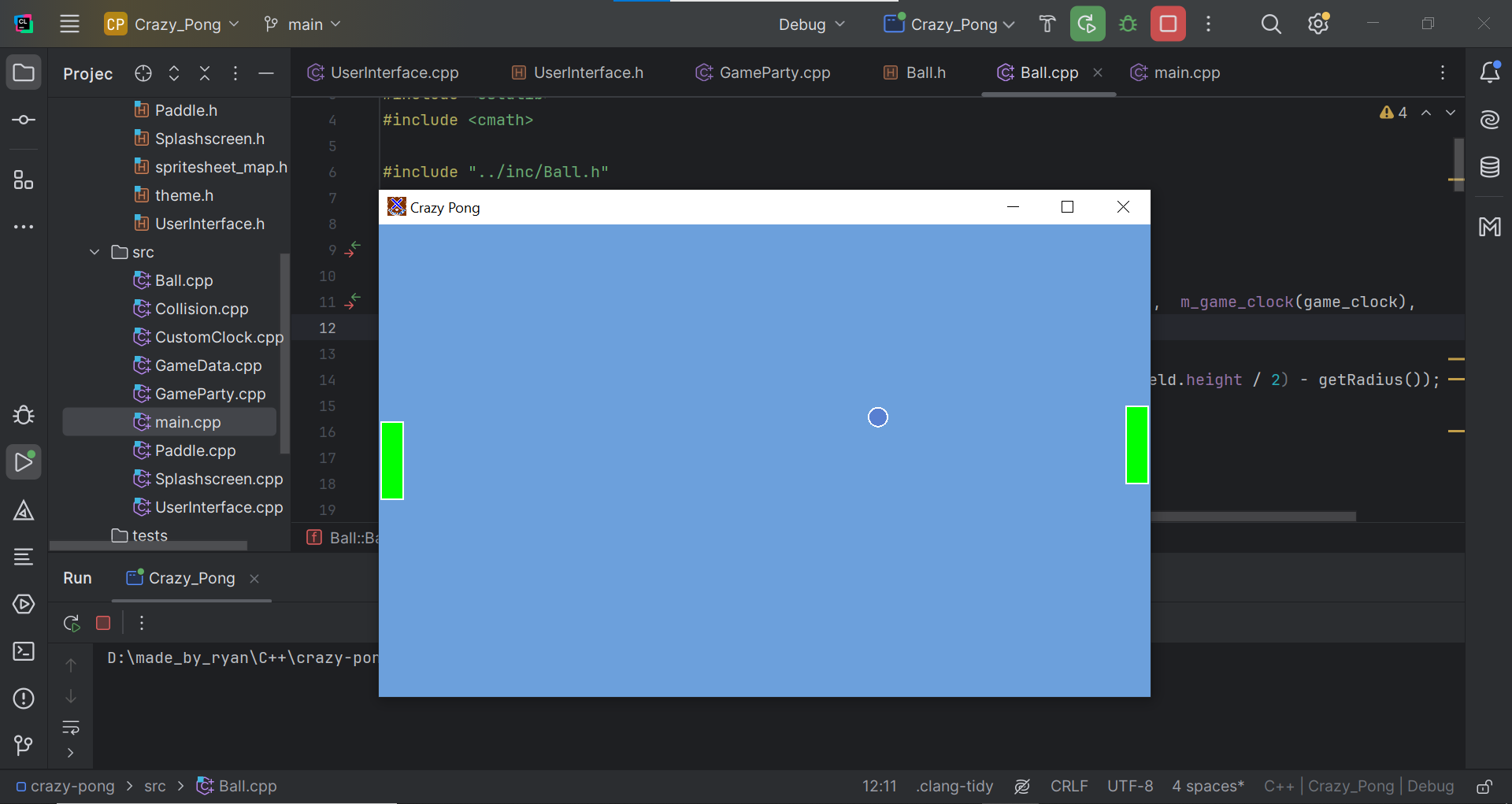Crazy Pong: A New Spin on a Classic Game
 Rayane TOKO
Rayane TOKO
Crazy Pong is an innovative take on the classic ping-pong game, designed to bring fun and excitement to players of all ages. My project aims to create an engaging and interactive gaming experience that combines nostalgia of classic game with some enhancements. I embarked on this journey for my portfolio project on the alx software engineering program, focusing on delivering a great quality work that I would be proud of.
This project was created for casual gamers and ping-pong enthusiasts looking for a fresh twist on a beloved pastime. My personal focus was on developing the core gameplay mechanics and ensuring a smooth user experience, allowing players to dive right into the action.
The Story Behind Crazy Pong
So why I choose to reproduce the pong game? Well the story is kinda short. First, it was a because I love video game 🙂. And then, it was because of challenge. I want to re-create a classic and improve it in my own way as simple as that.
Accomplishments
Throughout the development of Crazy Pong, I achieved several key milestones. I designed a robust architecture that facilitates seamless gameplay and user interaction. Below is a diagram illustrating the flow of data through our application:
I chose to use C++ with the SFML and TGUI library for the user interface due to they efficiency in handling graphics and multimedia.
Key Features:
Multiplayer Mode: Players can compete against friends in real-time, enhancing the social aspect of the game.
Power up: Some effect was added to increase the speed of the ball when it moves towards the opponent paddle or decrease it when it moves towards ours paddle.
Dynamic game play: The speed of the ball increase as time goes by.
Overcoming Technical Challenges
One of the most significant challenges I faced during the development of Crazy Pong was correctly handling the movements of the ball. Initially, the ball would move vertically after bouncing off the paddles, resulting in a rather unexciting gameplay experience. To address this issue, I had to delve into the intricacies of trigonometry and physics to calculate the ideal rebound angles for the ball.
Situation
At the start of the project, I implemented a basic game logics that controlled the ball's movement. However, as I tested the game, I noticed that the ball's trajectory lacked realism. It would often bounce to vertically or bounce straight back, leading to no exciting, predictable and monotonous gameplay. This was not the engaging experience I aimed to create.
How I fix it?
I began by researching which approach was used in the initial game and for it, this discussion was of great help to understand how I could implement it.
To implement this, I established a coordinate system for the game where the paddles and ball positions were defined. I use a function that generate randow angle, which allowed me to get a variable bounce angle which direction is not to vertically but also totally random depending on certain parameters like which paddle was hitted.
I also have to deal correctly with the time in the game so that the differents effects can work correctly and the ball move with fluidity. The time management was also important for making the game animations like for the splashscreen.
Lessons Learned
This project taught me some great lessons about problem-solving, and technical execution. Additionally, I gained a deeper understanding of animations principles and how to create a great gaming experience.
If I were to approach this project again, I would allocate more time for learn math 😅. Yeah, because I missed out on something, by being short of time, which could have contributed to fluidify the game play and the movement of objects in the game.
Conclusion
Crazy Pong is more than just a game; it’s the achievement of one step in my software engineering path and proof that I'm capable of doing some cool stuff 😉. I hope that I could learn more and more to become a deserving software engineer.
About Me
I am Rayane TOKO, a passionate programmer with a love for creating engaging experiences. For more . You can check out my project on GitHub. Let’s connect on linkedin. For more information, visit our Landing Page.
See the demo here.
Subscribe to my newsletter
Read articles from Rayane TOKO directly inside your inbox. Subscribe to the newsletter, and don't miss out.
Written by

Rayane TOKO
Rayane TOKO
👨💻 Computer Scientist | 🌌 Physicist Enthusiast 💡 Always exploring new technologies and seeking to bridge the gap between science and technology.